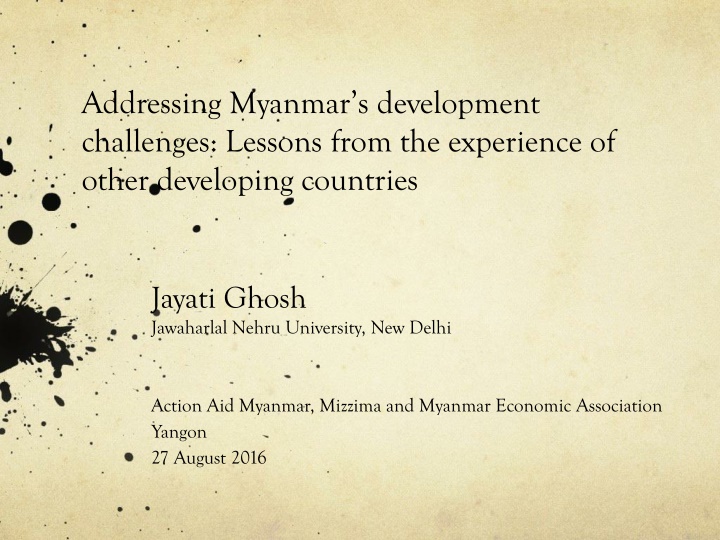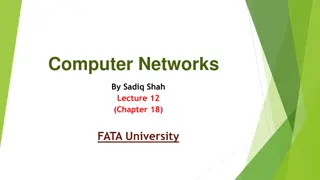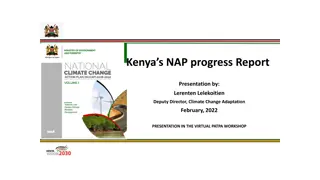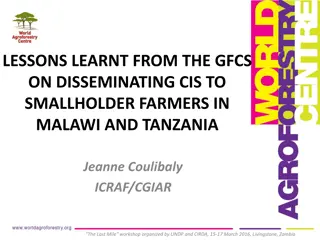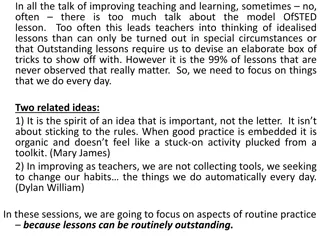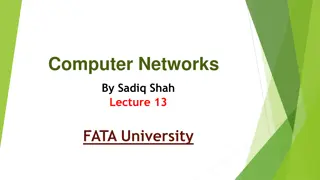Lessons in Addressing Development Challenges
Development is about more than just GDP growth; it involves productive diversification, structural change, and strategic planning. This article explores lessons from other developing countries and discusses strategies for Myanmar's development, including trade and industrial policies.
Download Presentation

Please find below an Image/Link to download the presentation.
The content on the website is provided AS IS for your information and personal use only. It may not be sold, licensed, or shared on other websites without obtaining consent from the author.If you encounter any issues during the download, it is possible that the publisher has removed the file from their server.
You are allowed to download the files provided on this website for personal or commercial use, subject to the condition that they are used lawfully. All files are the property of their respective owners.
The content on the website is provided AS IS for your information and personal use only. It may not be sold, licensed, or shared on other websites without obtaining consent from the author.
E N D
Presentation Transcript
Addressing Myanmars development challenges: Lessons from the experience of other developing countries Jayati Ghosh Jawaharlal Nehru University, New Delhi Action Aid Myanmar, Mizzima and Myanmar Economic Association Yangon 27 August 2016
What is development? Human and social progress, variously described. Simplistic approach based on GDP growth approach to more complex and multidimensional ideas of human development and of development as freedom, as the progressive realisation of human rights, of capabilities, etc. Here I will consider the basic aspect of productive diversification of productive structures in the economy towards higher value added activities as the essential basis for development: so development as productive transformation. This can imply movement of the working population across sectors or increased value addition of work within sectors.
Classic Kuznets-style structural change: South Korea Structural change in South Korea 70.00 20000 18000 60.00 Primary share of GDP (right scale) 16000 50.00 14000 Primary share of employment 12000 40.00 Manufacturing share of GDP 10000 30.00 8000 Manufacturing share of employment 6000 20.00 GDP per capita (1990 $) 4000 10.00 2000 0.00 0 1963 1965 1967 1969 1971 1973 1975 1977 1979 1981 1983 1985 1987 1989 1991 1993 1995 1997 1999 2001 20032005
This requires clear strategies Planning in the sense of co-ordination across departments and official actors with a medium-term approach Trade and industrial policies Financial policies especially directed credit Social policies All this implies important role for government so it is crucial for government actions and public spending to be transparent, democratically decided and socially accountable.
Some examples of trade and industrial policies Local content requirements for upstream and ancillary industries (Indonesia for petroleum, Philippines for mining) Export bans or taxes for unprocessed commodities (DR Congo for raw copper, Dominican Republic for some wood) Building clusters with economies of scope Focus on viability of small and informal production in all sectors (especially agriculture), through infrastructure and access to credit, inputs, marketing. Myanmar needs to exploit flexibilities available for LDCs in WTO and in ASEAN, but needs to exercise great care when signing new agreements to maintain policy space. In particular BITS with Investor State Dispute Settlement need to be carefully negotiated (India Model BIT).
Social policy as development policy Expansion and universal delivery of basic services, especially in nutrition, sanitation, health, education This was crucial to the Nordic model of development (Sweden, Norway, Denmark, Finland) and important but unrecognised feature of successful Asian industrialisation (Japan, East Asian NICs, China) Improves material and social conditions and gender equality. Positive effects on employment and growth directly and indirectly through the multiplier process. Helps to manage social tensions generated by rapid development. Public provision of affordable and reasonably good quality housing, transport facilities, basic food, school education and basic health care improves workers living conditions, ensures healthy and skilled workforce and (indirectly) reduces overall labour costs for private employers. It also provides greater flexibility for producers competing in external markets, since a significant part of fixed costs is effectively reduced.
More and better social protection Integrated set of social policies designed to guarantee income security and access to essential social services for all, paying particular attention to vulnerable groups and protecting and empowering people across the life cycle. Can includes guarantees of: Basic income security, in the form of various social transfers (in cash or in kind), such as pensions for the elderly and persons with disabilities, child benefits, income support benefits and/or services for the unemployed and working poor; Universal access to essential affordable social services in the areas of health, water and sanitation, education, food security, housing, and others defined according to national priorities; Employment though this is not social protection as such since it involves wage labour.
Can Myanmar afford this? Basic social protection measures often only cost a small percentage of national income even in severely resource- constrained countries. In countries like Benin, El Salvador, Mozambique and Viet Nam, major social protection floor programmes estimated to cost only 1-2 per cent of GDP. This is tiny compared to the tax revenues often forgone by not effectively collecting revenue from the wealthy and by not tackling inefficiencies that exist in many expenditure programmes. In the long run these schemes pay for themselves, by enhancing the productiveness of the labour force, the resilience of society and the stability of the polity.
Financing increased public expenditure Fiscal space can come be created through increasing tax revenues and better management of resource rents. Increased public investment can crowd in private investment, especially when public investment is in physical and social infrastructure. Cope for increasing direct tax collections through specific taxes better tax administration and compliance. Design or change contracts with MNCs to retain as much royalties from natural assets as possible, for use in public spending directed towards benefiting the people. (Ecuador, Bolivia, Crucial for public expenditure processes to be transparent and socially accountable.
Lessons from Southeast Asian emerging markets Directed credit is crucial for development, through institutions like development banks. Financial liberalisation may lead to financial deepening , but it does not have a positive effect on investment and real economic growth. Rather it can generate savings surpluses that are then exported and retard productive diversification, and expose economy to domestic and global boom-bust cycles. Domestic growth then is sustained by consumer credit that fuels housing and real estate booms and finance for related investment. These usually end in tears - downturn began a couple of years ago unravelling of household debt has knock-on adverse effects on bank viability and on investment.
